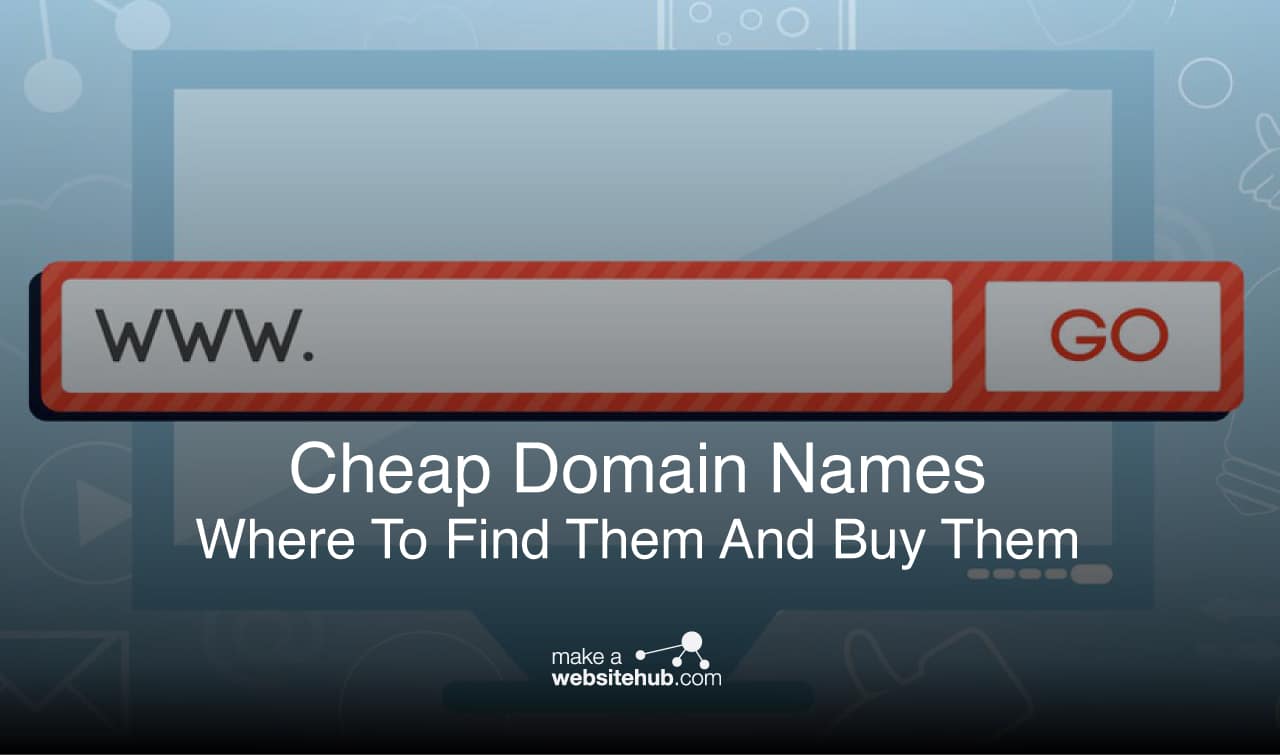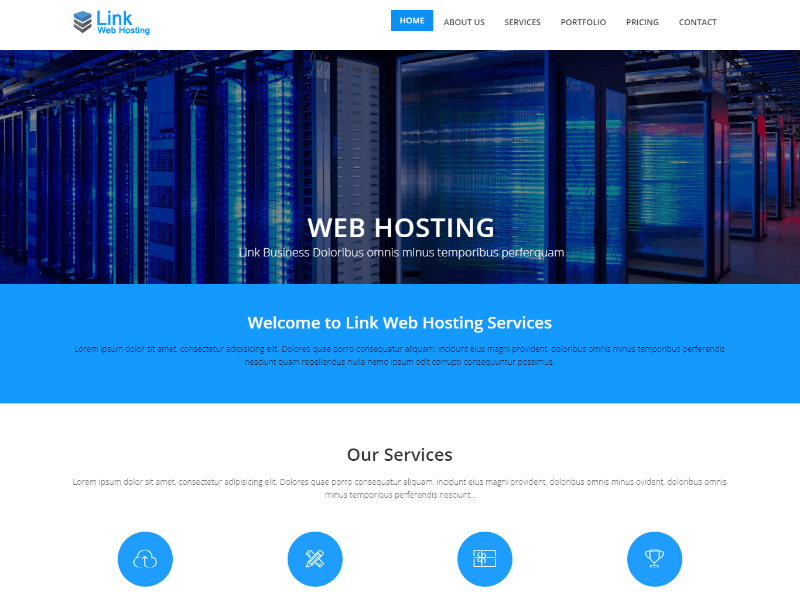Domains cheap are the gateway to your online presence, offering a cost-effective way to establish a unique identity on the web. Navigating the world of domain names can feel overwhelming, but with a little guidance, you can find the perfect domain that fits your budget and brand.
This guide explores the ins and outs of securing a domain name at an affordable price, covering everything from understanding domain extensions to leveraging domain auctions and marketplaces. We’ll also delve into the factors that influence domain pricing, share practical tips for finding cheap domains, and discuss the importance of managing and protecting your domain name.
Finding Cheap Domains
Securing a domain name is a crucial step in establishing an online presence. But with so many domain registrars and pricing options available, finding a cheap domain can feel overwhelming. This guide will equip you with the knowledge and resources to find affordable domain names without compromising on quality or security.
Reputable Domain Registrars Offering Affordable Prices
Choosing a reputable domain registrar is essential for ensuring the security and reliability of your domain name. Several reputable registrars offer competitive pricing and a range of features. Here are some of the top options:
- GoDaddy: GoDaddy is one of the largest domain registrars globally, offering a wide selection of domain extensions and competitive pricing. They also provide various web hosting and website building tools.
- Namecheap: Namecheap is known for its affordable domain names and transparent pricing. They offer a user-friendly interface and excellent customer support.
- Google Domains: Google Domains is a simple and straightforward domain registrar offering competitive pricing and seamless integration with Google Workspace services.
- Hover: Hover is a popular choice for its minimalist approach and focus on customer experience. They offer competitive pricing and a clean, intuitive interface.
Comparing Pricing Structures and Features of Different Registrars
Domain registrar pricing structures vary significantly, making it essential to compare options carefully. Consider these key factors when comparing different registrars:
- Domain Extension Pricing: The price of a domain name varies depending on the extension (e.g., .com, .net, .org). Compare the prices of different registrars for the specific extension you need.
- Renewal Fees: Domain names need to be renewed annually. Check the renewal fees of different registrars to ensure you are not surprised by higher costs in the future.
- Features: Some registrars offer additional features like domain privacy protection, DNS management tools, and website building tools. Consider these features and their associated costs.
- Customer Support: Look for registrars with responsive and helpful customer support, especially if you are new to domain registration.
Benefits of Using Domain Auctions or Marketplaces
Domain auctions and marketplaces provide an alternative way to find cheap domains. These platforms allow individuals and businesses to bid on domain names that are being sold by their owners. Here are some benefits of using domain auctions or marketplaces:
- Access to Premium Domains: You may find premium domain names that are no longer available for registration at regular prices.
- Competitive Bidding: The auction format allows you to set your own price and compete with other bidders.
- Potential Savings: You can often find domain names at lower prices than through traditional registrars.
Popular Domain Auction and Marketplace Platforms
Several reputable domain auction and marketplace platforms are available. Here are some of the most popular options:
- GoDaddy Auctions: GoDaddy’s auction platform offers a wide selection of domain names and competitive bidding options.
- Namecheap Auctions: Namecheap’s auction platform is known for its user-friendly interface and transparent pricing.
- Sedo: Sedo is a global domain marketplace with a vast inventory of domain names available for sale.
- Afternic: Afternic is a domain marketplace integrated with several popular domain registrars, making it easy to find and purchase domain names.
Tips for Finding Cheap Domains
Finding a cheap domain name doesn’t have to be a daunting task. By employing smart strategies and utilizing available resources, you can secure a domain that fits your budget and brand.
Using Domain Search Engines
Domain search engines are invaluable tools for finding affordable domains. These platforms allow you to search for available domain names across various extensions, including .com, .net, and .org.
Here’s a step-by-step guide to using domain search engines:
- Visit a reputable domain search engine, such as GoDaddy, Namecheap, or Google Domains.
- Enter your desired domain name or s in the search bar.
- The search engine will display a list of available domains matching your query, along with their prices.
- Review the results and select a domain that meets your requirements and budget.
Domain Name Availability
Before you can register a domain name, you need to check if it’s available. This step is crucial because registering a domain name that’s already taken can lead to complications and frustration.
There are various domain registrars that offer domain name availability checks. These registrars usually have a simple search bar where you can enter the desired domain name and click “Search” or “Check Availability.”
Checking Domain Name Availability, Domains cheap
Domain name availability checks are straightforward. You can use a domain registrar’s website to see if a domain name is available. Most registrars have a search bar where you can enter the domain name you want and click “Search” or “Check Availability.”
For example, if you want to check the availability of “example.com,” you would enter “example.com” in the search bar and click “Search.” The registrar will then tell you if the domain name is available or taken.
Implications of Choosing a Domain Name That Is Already Registered
If the domain name you want is already registered, you have a few options:
- Contact the current owner: You can try to contact the current owner and see if they are willing to sell the domain name to you.
- Find a different domain name: You can try to find a different domain name that is available.
- Use a different top-level domain (TLD): You can try using a different TLD, such as .net, .org, or .info.
Domain Availability Statuses
Here is a table that summarizes the different domain availability statuses:
| Status | Description |
|---|---|
| Available | The domain name is not registered and is available for registration. |
| Taken | The domain name is already registered and is not available for registration. |
| On Hold | The domain name is currently being held by a registrar and is not available for registration. |
| Pending | The domain name is currently being registered and will be available for registration soon. |
Domain Name Management
Managing your domain name effectively is crucial for maintaining your online presence and protecting your brand. It ensures your website remains accessible, secures your digital identity, and safeguards against potential issues like domain hijacking.
Domain Registrar Features
Domain registrars offer a range of features to help you manage your domains efficiently. These features include:
- Domain Renewal: Domain registrars provide automatic renewal options, ensuring your domain name doesn’t expire and your website remains online.
- Domain Transfer: If you want to move your domain to a different registrar, you can initiate a transfer process through the current registrar.
- Domain Privacy Protection: This feature hides your personal contact information from the public WHOIS database, protecting your privacy and reducing the risk of spam and unwanted solicitations.
- DNS Management: Domain registrars provide tools for managing DNS records, which control how your domain name resolves to your website’s server. This allows you to customize your website’s settings, including email addresses and subdomains.
- Domain Parking: If you’re not ready to launch a website, you can park your domain, displaying a placeholder page until you’re ready to activate it.
- Domain Forwarding: You can forward your domain to another website, redirecting visitors to a different URL.
Updating Domain Contact Information
Keeping your domain contact information up-to-date is essential for communication and security. If your contact information changes, you need to update it with your domain registrar.
- Access your domain registrar’s account: Log in to your account with your domain registrar.
- Locate the domain management section: Find the area where you can manage your domain settings.
- Edit the contact information: Click on the “Contact Information” or “Whois Information” section to update your name, email address, phone number, and other relevant details.
- Save the changes: After making the updates, save the changes to ensure your contact information is updated.
Updating DNS Settings
DNS settings control how your domain name resolves to your website’s server. Updating DNS settings is necessary when you change hosting providers, configure email services, or set up subdomains.
- Access your domain registrar’s DNS management panel: Log in to your account and navigate to the DNS management section.
- Understand DNS records: Familiarize yourself with the different types of DNS records, such as A records, CNAME records, and MX records.
- Edit or add DNS records: Use the provided tools to edit existing records or add new ones.
- Save the changes: Save the changes to apply the new DNS settings.
- Allow time for propagation: DNS changes can take up to 24 hours to propagate globally.
Domain Name Privacy

Domain name privacy is crucial for safeguarding your personal information and protecting your online identity. When you register a domain name, you are typically required to provide your personal details, such as your name, address, phone number, and email address. This information becomes publicly accessible through the WHOIS database, which can be used by anyone to look up the owner of a domain name.
Domain privacy protection is a service offered by many domain registrars that helps you keep your personal information private. By opting for this service, you can shield your details from public view in the WHOIS database. This helps to prevent unwanted contact from spammers, telemarketers, and other individuals or entities who might try to use your information for malicious purposes.
Domain Privacy Options
Domain privacy options are provided by domain registrars and can vary depending on the registrar and the specific domain extension. Some common options include:
- Domain Privacy Protection: This is the most basic option, which replaces your personal information with the registrar’s contact details in the WHOIS database. This is usually the most affordable option, but it may not be suitable for all situations.
- Private Registration: This option allows you to use a proxy service to register your domain name, further obscuring your personal details from the WHOIS database. This provides a higher level of privacy, but it can be more expensive than domain privacy protection.
- WHOIS Privacy: This option typically involves a third-party service that acts as a privacy proxy, hiding your personal information and providing a dedicated contact address for your domain. This option offers a high level of privacy, but it may involve additional fees.
Maintaining Domain Privacy
There are several steps you can take to maintain the privacy of your domain registration information:
- Choose a Reputable Registrar: Opt for a registrar that offers reliable domain privacy protection services and has a good reputation for security.
- Use a Separate Email Address: Avoid using your personal email address for domain registration. Instead, create a dedicated email address specifically for your domain name.
- Monitor Your WHOIS Record: Regularly check your WHOIS record to ensure that your personal information is not being displayed. If you notice any discrepancies, contact your registrar to rectify the situation.
- Use a Privacy Proxy: Consider using a privacy proxy service to further enhance your domain privacy. These services provide a dedicated contact address and handle all communications related to your domain.
- Enable Two-Factor Authentication: If your registrar offers two-factor authentication, enable it to secure your account and prevent unauthorized access to your domain registration information.
Domain Name Transfer
Transferring a domain name to a different registrar can be necessary for various reasons, such as finding a better price, accessing additional features, or simply changing providers. This process involves moving the registration of your domain name from one registrar to another.
Domain Name Transfer Process
Transferring a domain name involves a series of steps that ensure the smooth transition of ownership and control from the current registrar to the new one. Here’s a general overview of the process:
1. Initiate the Transfer: The first step is to contact the new registrar and request a transfer. You’ll need to provide the domain name, your contact information, and the authorization code (also known as an EPP code or transfer key) from the current registrar.
2. Confirmation from Current Registrar: The new registrar will then send a transfer request to the current registrar. The current registrar will verify the ownership of the domain name and send a confirmation email to the registered email address.
3. Confirmation from Domain Owner: You’ll receive an email from the current registrar with a link to confirm the transfer. Click the link to approve the transfer.
4. Transfer Completion: Once the confirmation is received, the transfer process will be initiated. It typically takes 5 to 7 days for the transfer to be completed.
Domain Name Transfer Checklist
Before initiating a domain name transfer, it’s essential to have the following information readily available:
- Domain name
- Current registrar’s name
- Authorization code (EPP code or transfer key)
- Registered email address associated with the domain name
- Contact information for the domain name (name, address, phone number)
- New registrar’s name
Domain Name Transfer Risks and Considerations
While transferring a domain name is generally a straightforward process, there are a few potential risks and considerations to keep in mind:
- Downtime: During the transfer process, the domain name may experience a brief period of downtime. This is typically a short period, but it’s important to be aware of it, especially if you rely on the domain name for your website or business operations.
- Loss of Control: If the transfer process is not completed successfully, you may temporarily lose control of the domain name. This is unlikely, but it’s essential to choose a reputable registrar and follow the transfer instructions carefully.
- Security Risks: Ensure the new registrar is reputable and offers adequate security measures to protect your domain name and personal information. Look for registrars with industry certifications and strong security protocols.
- Transfer Fees: Some registrars may charge a transfer fee. This fee is usually nominal, but it’s essential to factor it into your decision-making process.
Domain Name Renewal
Your domain name is your online identity, and it’s crucial to keep it active. Failing to renew your domain name can lead to losing your website, email addresses, and online presence. It’s like letting your lease expire on your online property.
Domain name renewal is the process of extending the registration period of your domain name. This ensures that your website remains accessible and your email addresses continue to function.
Renewal Process
Domain name renewal is a straightforward process that can be completed through your domain registrar. You’ll typically receive email reminders before your domain name’s expiration date.
To renew your domain name, you’ll need to log in to your registrar’s account and follow the instructions provided. The renewal process usually involves:
- Confirming your domain name.
- Selecting the renewal period.
- Paying the renewal fee.
Avoiding Domain Name Expiration
Here are some tips to help you avoid letting your domain name expire:
- Set reminders: Most domain registrars offer email reminders or calendar notifications. You can also use third-party reminder services.
- Enable auto-renewal: Many registrars allow you to enable auto-renewal, which automatically renews your domain name before it expires. This is the easiest way to ensure continuous ownership.
- Keep track of expiration dates: Mark your domain name expiration date on your calendar or use a dedicated domain management tool.
Domain Name Security
Your domain name is the foundation of your online presence, and it’s crucial to safeguard it from security threats. Just like you protect your physical assets, securing your domain name is essential to maintain control over your website and online identity.
Domain Name Security Services
Domain name security services offer a range of features designed to protect your domain name from unauthorized access and manipulation. These services typically include:
- Domain Locking: This feature prevents accidental or unauthorized transfers of your domain name. It acts as a safety net, ensuring that your domain remains under your control.
- Domain Monitoring: Security services monitor your domain name for any suspicious activity, such as attempts to change ownership or DNS records. They alert you immediately if any unauthorized changes are detected.
- DNSSEC (Domain Name System Security Extensions): DNSSEC adds a layer of digital signatures to DNS records, verifying their authenticity and preventing spoofing attacks. This helps ensure that users are directed to the correct website and not a malicious imposter.
These security services act as an extra layer of protection, safeguarding your domain name from various threats.
Concluding Remarks: Domains Cheap

In the end, securing a domain name doesn’t have to break the bank. By understanding the factors that affect pricing, utilizing available resources, and following best practices, you can find a domain that aligns with your needs and budget. Whether you’re launching a new website, building a brand, or simply securing a unique online presence, the right domain is the foundation for your digital success.
Securing a cheap domain name is a smart move for any business, especially if you’re looking to establish an online presence. Consider a website focused on remote energy monitoring , which is becoming increasingly popular as businesses strive for greater efficiency and sustainability.
With a well-chosen domain name, you can attract a wider audience and build a strong online brand.




